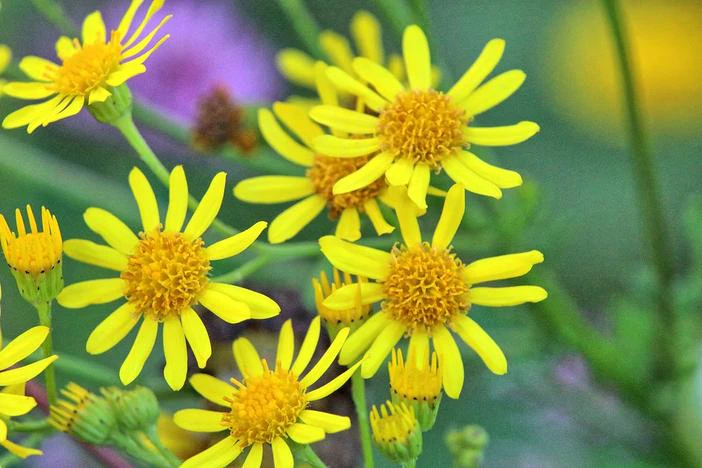Ragwort
(Senecio jacobaea)
Ragwort (Senecio jacobaea)
/
/

Huub Janssen
CC BY 2.0
Image By:
Huub Janssen
Recorded By:
Copyright:
CC BY 2.0
Copyright Notice:
Photo by: Huub Janssen | License Type: CC BY 2.0 | License URL: https://creativecommons.org/licenses/by/2.0/ | Uploader: Huub.Janssen | Publisher: Flickr


























Estimated Native Range
Climate Requirements
| • Precipitation | 28" - 62" |
| • High Temp. | 64°F - 77°F |
| • Low Temp. | 22°F - 32°F |
Summary
Senecio jacobaea, commonly known as Ragwort or Stinking Willie, is a biennial to short-lived perennial herb native to open habitats such as pastures, meadows, and coastal areas in northern Eurasia. It typically grows 1-7 feet tall with erect, reddish-purple stems and pinnately lobed leaves that emit an unpleasant odor when crushed. The bright yellow, daisy-like flower heads are grouped in dense, flat-topped clusters and bloom from June to November, providing a long-lasting display that is highly attractive to a wide range of pollinators, including bees, flies, and butterflies. Despite its toxic effects on cattle and horses due to pyrrolizidine alkaloids, Ragwort is a valuable nectar source for pollinators and supports a diverse insect fauna.
Ragwort is known for its ability to colonize disturbed soils and is often used in wildflower mixes for meadows and conservation areas. It thrives in a variety of soil types but prefers well-drained soils and can tolerate maritime exposure. It is adaptable to both full sun and partial shade. In cultivation, it requires minimal maintenance, but its invasive potential should be considered before planting. It is not typically grown in gardens due to its toxicity and invasive nature, but it can be found in naturalistic plantings and wildlife-friendly landscapes.CC BY-SA 4.0
Ragwort is known for its ability to colonize disturbed soils and is often used in wildflower mixes for meadows and conservation areas. It thrives in a variety of soil types but prefers well-drained soils and can tolerate maritime exposure. It is adaptable to both full sun and partial shade. In cultivation, it requires minimal maintenance, but its invasive potential should be considered before planting. It is not typically grown in gardens due to its toxicity and invasive nature, but it can be found in naturalistic plantings and wildlife-friendly landscapes.CC BY-SA 4.0
Plant Description
- Plant Type: Herb
- Height: 1-3 feet
- Width: 1-2 feet
- Growth Rate: Rapid
- Flower Color: Yellow
- Flowering Season: Summer
- Leaf Retention: Deciduous
Growth Requirements
- Sun: Full Sun, Part Shade
- Water: Medium
- Drainage: Medium, Fast
Common Uses
Bee Garden
Natural Habitat
Open habitats such as pastures, meadows, and coastal areas in northern Eurasia
Other Names
Common Names: Common Ragwort, Tansy Ragwort, Stinking Willie
Scientific Names: Senecio jacobaea
GBIF Accepted Name: Senecio jacobaea